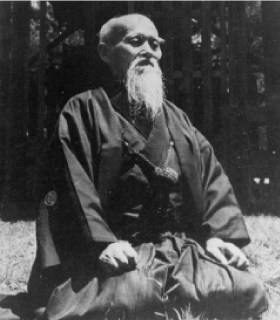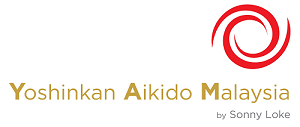 |
Modern day aikido can trace its origins back to the feudal society of 9th century Japan. The Aiki system of techniques is said to have originated with Prince Teijun, the sixth son of the Emporer Seiwa (850-880AD) and was passed down through the Minamoto family. Over following generations, the techniques were eventually handed down to Yoshimitsu Shinra Saburo, the younger brother of Minamoto Yoshiie. Yoshimitsu was a man of exceptional talent and skill it was said that he devised many of his techniques by watching a spider skillfully trap a large insect in its fragile web. His house, the Daito Mansion, gave its name to his system of Aikijujutsu, which became known as Daito Ryu Aikijujutsu. |
| The Daito Ryu techniques were handed down in secret to family members and retainers, eventually reaching Takeda Sokaku (1859-1943), who was later to play major role in the foundation of modern day aikido. The Daito Ryu system that was handed down to Takeda was undoubtly differrent from that which was taught a thousand years before. The specific art studied by Takeda are unknown except for his training in Ono-ha Itto-ryu Kenjutsu. All evidence points to the conclusion that the Daito Ryu arts that Takeda taught are as much synthesis of his vast training experiences and technical innovation as they are faithful continuation of the Aizu clan martial tradition. In addition, Ueshiba also studied Tenjin Shinyo Ryu Jujutsu, Yagyu Shinkage Ryu Kenjutsu along with other empty hand and weapon arts. |
 Ueshiba Morihei |
|||||
 Soke Shioda Gozo |
The Yoshinkan Style of aikido was founded by Soke Shioda Gozo (1915-1994), who was born in Shinjuku, Tokyo, in1915. His father was a prominent pediatrician and medical academic, and it was he who encourage Soke Gozo to take up various forms of exercise. As a result, Soke Gozo practiced kendo, gymnastics, and judo in his youth. It was in judo that he excelled, attaining a third dan by the time he reached his mid-teens. A turning point in Shioda sensei's life came at the age of 17 when his father sent him to the Kobukan to train under Ueshiba Sensei, a man who was rumored to be invisible. On his first visit to the Kobukan, Shioda was invited by O Sensei to use his judo skills against him. Skeptical of his opponent's ability, Shioda launched an attack only to find himself flung through he air, landing head first. A dazed and bewildered Shioda was awed at what had taken place. |
The very next day, May 24th 1932, the young Shioda joined the Kobukan and began his aikido career under the guidance of O sensei. Shioda left the Kobukan in 1941 upon completing his university studies. After the Second World War, the practice of martial arts in Japan was banned by the occupying forces. Upon the lifting of the ban, Shioda Sensei performed his first public demo in 1954 at the All Japan Martial Arts Demonstration, organized by the Life Extension Society in front of a crowd of 15,000 people. He was awarded the grand prize for best demonstration, and within a year, Shioda Sensei was heading his own aikido dojo, named the Yoshinkan after his father's original dojo. |
 Soke Shioda Gozo |
|||||



